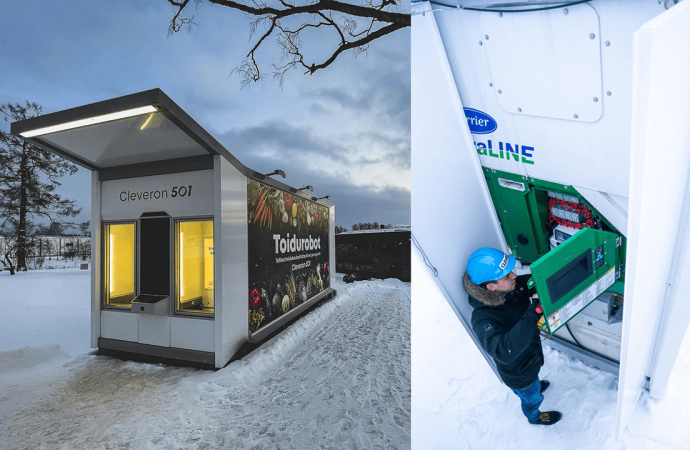The Bend Motorsport Park has installed an innovative, locally developed CO2-only refrigeration system. Accelerate Australia & NZ reports.

The Bend Motorsport Park, Tailem Bend, South Australia
In April 2018, The Bend Motorsport Park (The Bend), South Australia's brand new $160 million motor racing circuit, opened for business. It is making a splash in Australia's HVAC&R industry with an innovative, locally developed CO2-only refrigeration system for its commercial kitchens and cold storage facility.
The Peregrine Corporation — which operates service stations and convenience stores across South Australia — financed, developed and owns The Bend.
It is also South Australia's largest privately-owned company and has put energy efficiency at the top of its agenda.
The Bend's commercial kitchens and cold storage rooms employ a new and innovative refrigeration system based on natural refrigerant CO2. The CO2 system was funded, designed and developed locally in South Australia.
"With the ever-increasing cost of energy, we have substantial commercial motivation to maximise the energy efficiency of our sites, both large and small, as well as to ensure that the plant and equipment we install has an appropriate lifespan to deliver a return on our investments," says John Domino, chief operating officer of Peregrine Corporation Infrastructure (PCI), part of Peregrine Corporation.
The Bend Motorsport Park measures 2,000 acres and is located about 100 km south of Adelaide.
The largest building on the property is the Primary Pit Building, a 300m-long, four-storey building. It was built to house a motor museum, corporate suites, 34 fully fitted pit boxes and a 100-room hotel.
The Primary Pit Building also houses the CO2 refrigeration system, which serves the cooling needs of The Bend's commercial kitchens, cold rooms and freezers.
For PCI, "overall lifecycle cost and environmental risk mitigation were key factors" in deciding what type of refrigeration equipment to install, according to Domino.
"We know that mechanical services systems contribute around half of the energy use and resultant greenhouse gas production associated with a building," he says.
Opting for a natural refrigerant, Domino says, avoids the potential need to replace the system again in future, thus lowering costs over the installation’s lifespan.
"We’re aware that many existing commercial refrigerants are being phased out or have already been phased out of use," Domino explains.
"As ongoing owners and operators of numerous buildings and facilities, lifespan and lifecycle costs are critical to our business, hence the choice of refrigerants was key to future-proofing this building," he says.
Domino reveals that reliability of equipment and access to ongoing support were also very important in deciding who to work with.
"Being located more than 100 km from key suppliers in Adelaide, the functionality and reliability of the refrigeration system serving the commercial kitchens and cool rooms is critical,” he says. “As such, we needed to work with partners who could deliver and support high quality, reliable installations."
Lifecycle costs are critical to our business, hence the choice of refrigerants was key to future-proofing this building.”
– John Domino, Peregrine Corporation Infrastructure (PCI)
Overcoming the CO2 equator
PCI did not have to look far beyond South Australia to find a reliable technology supplier capable of supplying an energy-efficient refrigeration system based on natural refrigerants.
South Australian system manufacturer Glaciem Cooling Technologies (Glaciem) — with the support of the South Australian government and the University of South Australia — developed an innovative CO2-based refrigeration system designed specifically for Australia's notoriously extreme climate.

The system, called the Dew Point-CO2 system (DP-CO2), uses 'indirect evaporative cooling' or what Glaciem calls 'Dew Point cooling' to enable the CO2-only system to operate efficiently in hot climates without the use of HFC gases, while also reducing overall system complexity.
In addition to the DP-CO2 system, Glaciem incorporated 100 kW of thermal energy storage (TES) and advanced control and forecasting algorithms to help optimise the total energy use of the system even further.
A solar PV system was also installed to supply renewable energy to the entire system — with surplus energy stored by the TES system.
It is the surplus energy that is then stored by the TES, making the fully integrated system as energy and cost-efficient as possible.
"In a world with localised micro-grids, it is the ability of HVAC&R systems to dynamically interact with those grids that becomes the overriding factor in maximising the economic benefits of the installed renewable energy assets," says Julian Hudson, managing director, Glaciem Cooling.
"The performance of the DP-CO2 (Dew Point-CO2) system and the control algorithms has lived up to expectations so far,” Hudson says. “We still require data from the summer months before we have a full year of operating data, as the system was commissioned in March/April 2017. We did have a couple of 39°C/40°C days during commissioning, and the system was still operating in subcritical mode."
Feedback from Peregrine has so far been positive. Domino is happy with how the installation and commissioning process has gone and is looking forward to seeing this new technology benefit his business.
"Commissioning went exceptionally well," he says. "The project was very well briefed to begin with. Project personnel were involved from the start until the end. Glaciem was proactive and worked very closely with PCI and its installers," he adds.
The system’s operation to date, Domino says, "matches our expectations 100%".
This is an excerpt from the cover story of the summer 2019 edition of Accelerate Australia & NZ magazine. To see the full story, click here.
Related stories


